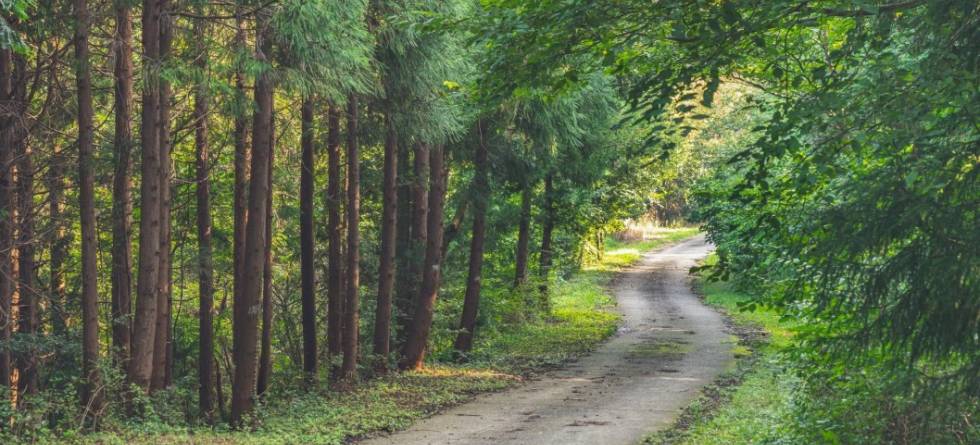Written by Hanna Lee, researcher at the Bjerknes Centre and NORCE
Last year, there was an article suggesting that around 0.9 billion hectares of global land areas can be reforested (Bastin et al. 2019). According to their estimation, Norway has approximately 54,000 km2 land area, where trees and forests can be restored. This is just slightly smaller than the whole land area of the three Counties in western Norway combined (Rogaland: 9,377 km2, Møre og Romsdal: 14,355 km2, and Vestland: 33,870 km2)!
Some people used this article to support climate forestry, planting trees to mitigate climate warming, in Norway. These people argue that since there is still a large area in Norway to plant trees, we should plant trees there because planting trees can also help mitigate climate. It’s like killing two birds with one stone!
I support the idea of forest restoration at the places where trees have been cut down for various reasons. But I am against using this article's argument to promote tree planting in Norway in new areas to mitigate climate. Because ‘there are still large areas all over the world, where trees can be planted’ and ‘tree planting can help climate mitigation’ are two different arguments.
Many people love forests for what they provide. But I want to emphasize that we must not blur the main point just because of the benefits and feelings associated with forests. When we discuss the purpose of ‘global scale climate mitigation by planting trees’, we should focus on how forests affect global scale climate.
Here’s how forests affect climate. The effects of forests on climate can be divided into two: biogeochemical effects and biogeophysical effects.
Biogeochemical effects are the well known carbon dioxide (CO2) uptake during plant growth. Because CO2 is one of the major greenhouse gases, the more CO2 is removed from the atmosphere, the cooler the climate will be. Until we cut down the trees again, the majority of CO2 taken up by trees will be stored there.
The lesser emphasized biogeophysical effects are the physical effects created by plants. The three major biogeophysical effects created by forests are albedo, evapotranspiration, and turbulence effects. Easiest way to understand albedo is to think about reflection.
When the sun’s energy hits the land surface, some of it gets absorbed and some of it gets reflected back to space. If the surface is light, it reflects more energy and we call this high albedo. This is the same principle as our tendency to wear dark colored clothes in winter because they absorb more energy to keep us warmer and light colored clothes in summer because they don't absorb as much energy and keep us cooler.
Trees have a deeper root system and leaf surface than grass. Deeper roots can pump more soil water to the canopy and larger leaves breath out, or transpire, more water. Larger leaf surface also increases evaporation of water from the leaf surface. These two combined are called evapotranspiration. Just as sweating cools our body, evapotranspiration cools the land surface.
Turbulence effects are a bit more subtle. Rough surfaces tend to create more small eddies in the atmosphere and this has a cooling effect. Complex structure of forest canopy tends to cool the land surface more than homogeneous grasslands by creating some turbulence.
In the tropics, the effects of forests on climate are easier to understand. When there is more forest area in the tropics, CO2 uptake increases very much (much cooling), evapotranspiration increases very much (much cooling), turbulence increases (cooling), but albedo effects in the tropics are too small to make much difference. In high latitudes, the effects of forests on climate are more difficult to understand. First of all, plants in high latitudes do not grow as fast as they do in the tropics. In addition, it snows in the winter.
These are two very critical things to consider when thinking about the combined biogeochemical and biogeophysical effects of forests on climate. When there is more forest area in high latitudes, CO2 uptake increases but not very much (cooling), evapotranspiration increases (cooling), turbulence increases (cooling), but albedo decreases very much (much warming). This is because snow falls through the forest canopy, keeping the surface darker compared to snow covered grasslands. Even without snow, forest canopy in high latitudes are much darker than grasslands.
In this posting, we are discussing the effects of forests on global climate. Since we are unable to make global scale observations, we need to depend on modeling studies to understand how forests affect global climate via combined biogeochemical and biogeophysical effects. Surprisingly, the state-of-the-art climate models have a consensus in this topic!
First, tropical forests have an overall cooling effect on climate. Second, high latitude forests do not have an overall cooling effect on climate.
The second part includes some uncertainty. Not every model agrees with each other; some models show high warming effects from high latitude forests and some models do not show noticeable effects at all. But the consensus is that high latitude forests do not have a global scale cooling effect on climate when biogeochemical and biogeophysical effects are combined.
As we can see from climate modeling studies, the effects of tree planting on global climate can vary depending on where the trees are planted. So if we simply consider global scale climate mitigation by planting trees in new areas, it is more beneficial to plant them in the tropics and reconsider planting in high latitudes.
References
Global forest restoration potential
Bastin et al. (2019) Science, 365:76-79.
Overall forest and climate
Arora & Montenegro (2011) Nature Geosci., 4, 514-518.
Bonan (2016) Annu. Rev. Ecol. Evol. Syst. 47:97-121.
Davin & de Noblet-Ducoudré (2010) J. Clim., 23, 97-112.
Longobardi et al. (2016) PlosOne, https://doi.org/10.1371/journal.pone.0153357

